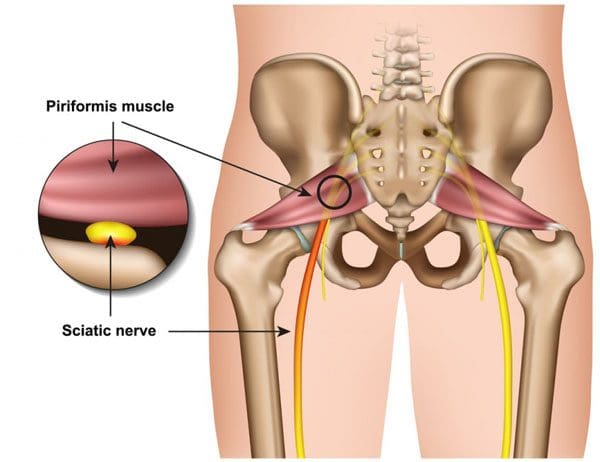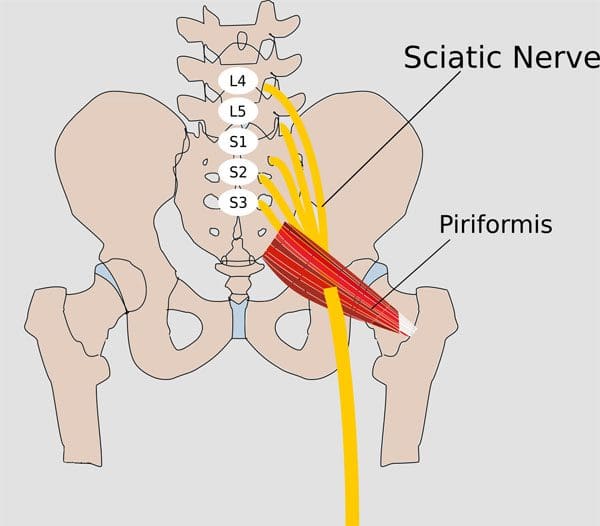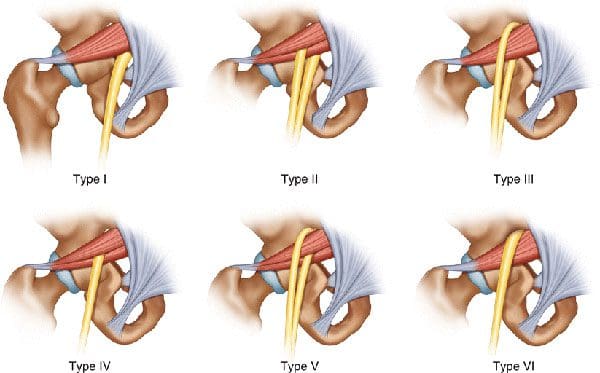
Testing For Piriformis Syndrome or Sciatica through Chiropractic
Identification of piriformis syndrome or sciatica requires proper testing and examination. The piriformis muscle begins at the sacrum near the sacroiliac joint and is attached to the femur/thigh bone at the outer area of the hip. The sciatic nerve passes typically under or through the muscle before going down the back of the thigh.

The piriformis helps turn the hip outward and bring the thigh outward to one side while the hip is bent. This could be when raising the knee and bringing the leg out. An example is stepping out of a car. The muscle also helps to stabilize when walking, running, and standing. Individuals with the sciatic nerve passing through the piriformis have an increased chance of developing piriformis syndrome. It can also be called piriformis sciatica since it is not true sciatica.

Symptoms
Piriformis syndrome does not always present the same way. Common symptoms include pain, tingling, and numbness in the buttocks that becomes worse when sitting. Other symptoms can include:
- Pain when sitting, standing, or walking.
- Pain when getting up from a seated/squatting position
- Pain in the sacroiliac joint
- Pain and/or pins and needles, burning, tingling, or itching sensation
- Movement helps to reduce pain symptoms
- Numbness in the foot
Many of these symptoms can be mistaken for sciatica. This is why proper testing is necessary to provide the appropriate treatment; otherwise, the condition could worsen or create new injuries.
Causes
- Primary piriformis syndrome happens when splitting the piriformis muscle, the sciatic nerve, and/or the sciatic nerve does not run along the normal path.
- Secondary piriformis syndrome is more common and is caused by inflammation of the soft tissues, muscle spasms, etc. And the result is nerve compression.

- Direct trauma to the buttock area can definitely cause inflammation, scarring, and contraction of the piriformis muscle. This could be the result of an automobile accident or a fall.
- The most common cause is a progressive tightening of the muscle brought on from a weakened piriformis muscle.
Testing
Because of the close relation between piriformis syndrome and sciatica, a chiropractic medical professional will perform various tests to determine if symptoms are spinal disc-related or caused by the sciatic nerve getting pinched or impinged piriformis muscle. A chiropractor will examine the low back, hip, pelvis, sacroiliac joint, walking gait, posture, and leg length. They will test various body reflexes as well. Other tests can include:
- Palpation/manipulation of the piriformis muscle
- A Straight leg raise will be done to see if there is localized pain when pressure is applied to the piriformis muscle and the tendon. The chiropractor will flex the hip at a 90-degree angle and extend/straighten the knee.
- A Freiberg test will be done to see if pain presents around the piriformis or reproduces symptoms.
- The Pace maneuver test looks for pain and/or weakness during rotation of the hip when sitting.
- The F.A.I.R test stands for flexion, adduction, and internal rotation. This test has the individual lie on the non-affected side while the chiropractor guides the painful leg into hip flexion, turns it in toward the body, and gently turns the lower leg outward.
- The Beatty maneuver tests for pain while lying on the non-affected side, and the chiropractor elevates the flexed symptomatic leg.
- Testing for pain or weakness in specific positions is usually conducted for one minute or when the individual experiences symptoms.

In addition to a physical exam, a chiropractor will utilize imaging scans to rule out any other causes. This can include X-rays, MRIs, or CT scans. Once the source has been diagnosed, treatment can begin. Many individuals choose to wait and see what happens, hoping the problem will go away. But the sooner the root issue is dealt with, the sooner an individual can get back to living pain-free.
Sciatica Pain Rehabilitation
References
The Journal of the Osteopathic Medical Association. (November 2008) Diagnosis and Management of Piriformis Syndrome: An Osteopathic Approach jaoa.org/article.aspx?articleid=2093614





